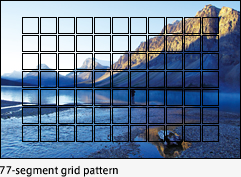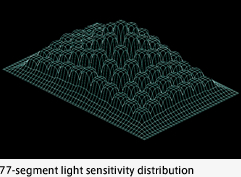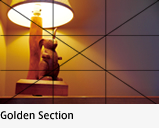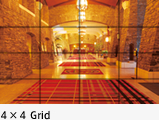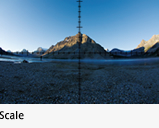The K-5 II’s sophisticated metering system divides the image field into 77 segments to accurately and comprehensively measure the lighting condition over the entire image field. As the result, this system minimizes the adverse effect of point light sources, and prevents excessive underexposure of subjects in backlight. The K-5 II also provides center-weighted metering and spot metering as options.
With the PENTAX-original Hyper Control system, the Hyper Program (P) mode is designed for easy control of depth of field and subject movement, while the Hyper Manual (M) mode provides instant switching to manual exposure operation. The K5 II also offers Sensitivity-Priority (Sv)* and Shutter-speed/Aperture-Priority (TAv)** modes as creative options.
Sv: When the user sets the desired ISO sensitivity, the camera automatically selects the optimum combination of aperture and shutter speed for normal exposure.
TAv: When the user sets the desired aperture and shutter speed, the camera automatically selects the optimum ISO sensitivity for normal exposure.
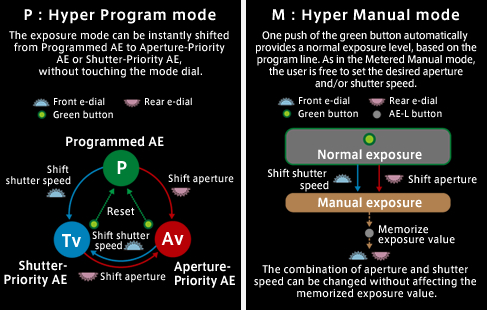
The K-5 incorporates a high-speed, high-precision shutter unit with a top speed of 1/8000 second, which allows you to freeze the split-second action of a fast-moving subject sharply and vividly. When coupled with large-aperture lenses, this high-speed shutter allows you to open up the aperture to throw the background out of focus, even in bright locations.
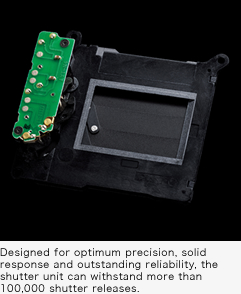
The K-5 II features high-speed continuous shooting at a maximum speed of seven images per second. The shock and repercussion caused by the mirror’s swing-up/down action has been greatly reduced. As the result, the precision of AF and AE operation has been improved, while image shake in the viewfinder and shutter noise have been minimized.

With a single push of the LV (Live View) button on the camera’s back panel, you can instantly switch from viewfinder shooting to live-view shooting.
Note: When the mode dial is set to Movie position, the LV button is used to set the movie stand-by mode.
Grid display
During Live View shooting, three different grid patterns can be displayed on the screen: Golden Section to provide the ideal, most stable segmentation pattern; 16 Segment to facilitate precise alignment of horizontal and vertical lines; and Scale convenient for fixed-point observation and aerial/astronomical photography.
AF modes
The K-5 II offers a choice of three different AF modes during Live View shooting: Phase-matching AF used in viewfinder shooting; Contrast AF to shift a focus point to the desired AF sensor in the image field; and Face Recognition AF (Face Recognition & Contrast AF) for automatic detection of the subject’s face.
The K-5 II’s Full HD movie recording function offers many benefits of SLR photography, including high-sensitivity shooting, interchangeable lenses with distinctive perspective and rendition, and a beautiful bokeh (out-of-focus) effect. This helps you to capture personalized, high-definition movies.


| Image size | Pixels | Aspect ratio | Frame rate |
|---|---|---|---|
 |
1920×1080 | 16:9 | 25fps |
 |
1280×720 | 16:9 | 30fps |
 |
1280×720 | 16:9 | 25fps |
 |
640×480 | 4:3 | 30fps |
 |
640×480 | 4:3 | 25fps |
Stereo sound recording (with an external microphone)
The K-5 II’s built-in microphone provides monaural sound for your movies, but you can also add an external microphone for stereo recordings. This is especially handy when you want to minimize camera operation noises, or desire more dramatic, lively sound effects.
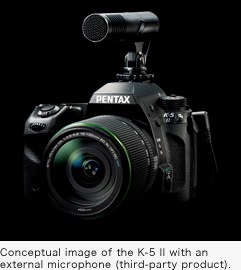
You can segment a recorded movie clip or remove unwanted sections while viewing the clip on the LCD monitor, without the help of a personal computer. You can even pick a single frame of a movie clip and save it as a separate JPEG-format file.
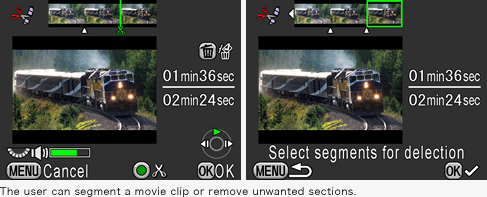
The K-5 II’s digital level detects the horizontal and vertical tilt of the camera with great accuracy. It comes in handy when a base line is not evident, such as with landscapes and nightscapes, or when you want to eliminate vertical tilt to keep an accurate record of the subject’s proportions or to prevent unintentional shift of a focus point in the image field.
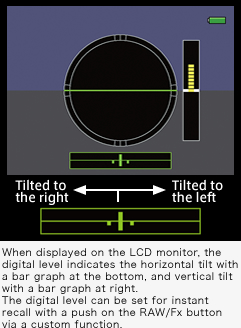
Since this function automatically captures images at a fixed interval, it comes in handy for recording the transition of a particular subject or event, such as the blossoming of a flower, the hatching of a butterfly, or a sunrise. You can preprogram the starting time, interval and number of images to be captured (up to 999 images). The camera’s power is automatically turned on, even when the auto power-off function is engaged.


















